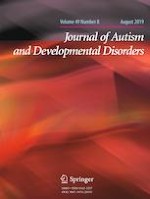17-05-2019 | Original Paper
Children with Autism Spectrum Disorder’s Lying is Correlated with Their Working Memory But Not Theory of Mind
Gepubliceerd in: Journal of Autism and Developmental Disorders | Uitgave 8/2019
Log in om toegang te krijgenAbstract
The present study examined the role of executive function in lying for children with autism spectrum disorder (ASD). The temptation resistance paradigm was used to elicit children’s self-protective lies and the Hide-and-seek task was used to elicit children’s self-benefiting lies. Results showed that children with ASD told fewer lies in the two deception tasks compared to children with intellectual disability (ID) and typically developing (TD) children. Furthermore, children with ASD’s lying were positively correlated with their working memory, but not with their theory of mind. These findings demonstrate that the mechanisms underlying deception for children with ASD are distinct from that of TD children.
